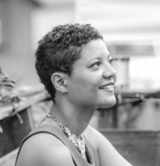Summary
Pick up a newspaper and every day you see an onslaught of headlines about disaster and crisis. It would seem that the 21st century is starting out as a perpetual crisis. The civic warrior in each of us asks this small question: "How might I make a change? What can I do to make a difference?" During this presentation we dig deeper into this idea—venture beyond the question with tactics to explore the design of a more resilient community.
Key Insights
-
•
The 1935 US Forest Service 10 am policy aimed to extinguish fires by 10 am the next day but unintentionally caused greater wildfire severity by preventing natural burns.
-
•
Long-term policies can have profound, cascading environmental and social impacts decades later, underscoring the need for forward-thinking decision making.
-
•
Disasters are exacerbated not just by natural forces but by human decisions around urban design, resource allocation, and infrastructure investment.
-
•
Marginalized and lower-resource communities are disproportionately affected by disasters due to historical redlining and lack of mitigation funding.
-
•
Mitigation investments save money and lives but are often underfunded because their benefits are invisible until disaster strikes.
-
•
Emergency management has become inherently political, no longer a neutral field, requiring active engagement with social justice and equity issues.
-
•
Designers have an emerging and critical role in emergency management, helping shape resilient infrastructure and policies with long-term social and ecological perspectives.
-
•
Current policies like the Stafford Act limit disaster recovery by mandating infrastructure repair only to previous states, discouraging needed systemic improvements.
-
•
Inclusive decision-making tables that represent diverse stakeholders improve disaster preparedness and response effectiveness.
-
•
The 21st century demands a shift towards humanitarian, equity-centered approaches in emergency management that address social divides and build resilient communities.
Notable Quotes
"Every emergency manager has an origin story, a first disaster, a first experience with disaster."
"The 10 am rule allowed grass, trees, and underbrush to grow unchecked for nearly 60 years, creating the circumstances necessary for Yellowstone to ignite like a tinderbox."
"Our choices make disasters more deadly, more costly, and more frequent."
"Emergency management is now political, not partisan, but political."
"How might we or rather how should we prepare for, react to, and heal from disasters?"
"It is not just about designing better infrastructure, but questioning what choices we are making today that will impact communities 10, 20, or 100 years down the road."
"Disaster response has been incredibly siloed, often excluding voices that represent vulnerable communities."
"The 21st century is about the imperative for equity — human equity — in emergency management and public safety."
"We are on the precipice of something culture changing in emergency management."
"Policies written on paper can have lasting impacts for decades, shaping who suffers the most during disasters."
Or choose a question:
















More Videos

"A 101 conversation over coffee yields better insights than written reviews in 360 assessments."
Adam Cutler Karen Pascoe Ian Swinson Susan WorthmanDiscussion
June 8, 2016

"Many product managers got their roles because they know the business or subject matter, but they don’t know how to manage product development."
Peter MerholzThe Trials and Tribulations of Directors of UX (Videoconference)
July 13, 2023

"If you haven’t designed who your teams are and who your players are, expecting people to comply with standards won’t work."
Lisa WelchmanCleaning Up Our Mess: Digital Governance for Designers
June 14, 2018

"The solutions are out there; we just need the will to implement them."
Vincent BrathwaiteOpener: Past, Present, and Future—Closing the Racial Divide in Design Teams
October 22, 2020

"Engineers can be our biggest allies in making really important process changes."
Brenna FallonLearning Over Outcomes
October 24, 2019

"We are all experiencing a spatial collapse, a disruption of our mental models of how we navigate physical and virtual spaces."
Tricia WangSpatial Collapse: Designing for Emergent Culture
January 8, 2024

"Proto personas created by cross-department participants helped us build unbiased, relevant survey questions."
Edgar Anzaldua MorenoUsing Research to Determine Unique Value Proposition
March 11, 2021
"We manage the environment in which knowledge distribution takes place, not the process itself."
Designing Systems at Scale
November 7, 2018

"Design is the rendering of intent — bringing ideas into a form people can interact with to solve problems, as Jared Spool said."
Erin WeigelGet Your Whole Team Testing to Design for Impact
July 24, 2024
















